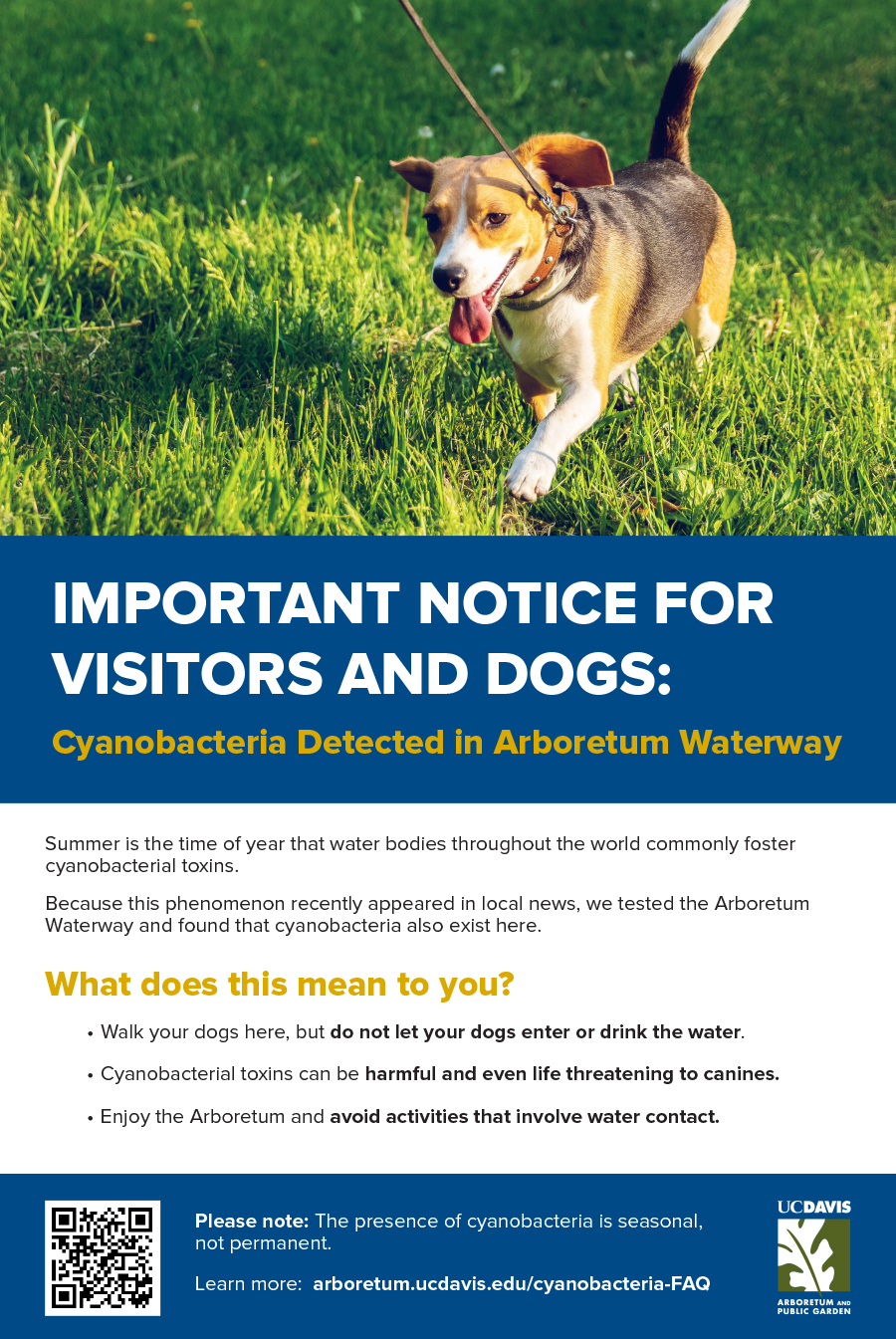
Cyanobacteria Detected in Arboretum Waterway

by Andy Fell
If you exercise your dog in the arboretum, please continue to do so — but don’t let your pet get in the water. Tests show that cyanobacteria are growing in parts of the Arboretum Waterway. These microscopic organisms can make a toxin that is rapidly lethal to dogs that ingest contaminated water.
Blooms of algae and cyanobacteria are common in creeks, rivers, ponds and lakes, especially in nutrient-rich waters in summer. (The Arboretum Waterway, despite its name, is a pond — it has no natural flow.) This year, cyanobacteria blooms have been reported at numerous locations in our region, including the Sacramento River and Sacramento-San Joaquin Delta, and Folsom Lake and Clear Lake.
Cyanobacteria live throughout the water column, not just as “scum” on the surface. So it is difficult to tell if water is contaminated just by looking at it. The solution? Just don’t go in the water.
The Arboretum Waterway Maintenance and Enhancement Project and other steps can break up mats and somewhat reduce growth of algae and cyanobacteria. However, these are natural parts of warm water ecosystems.
Read the our FAQ on cyanobacteria | Download the informational poster
